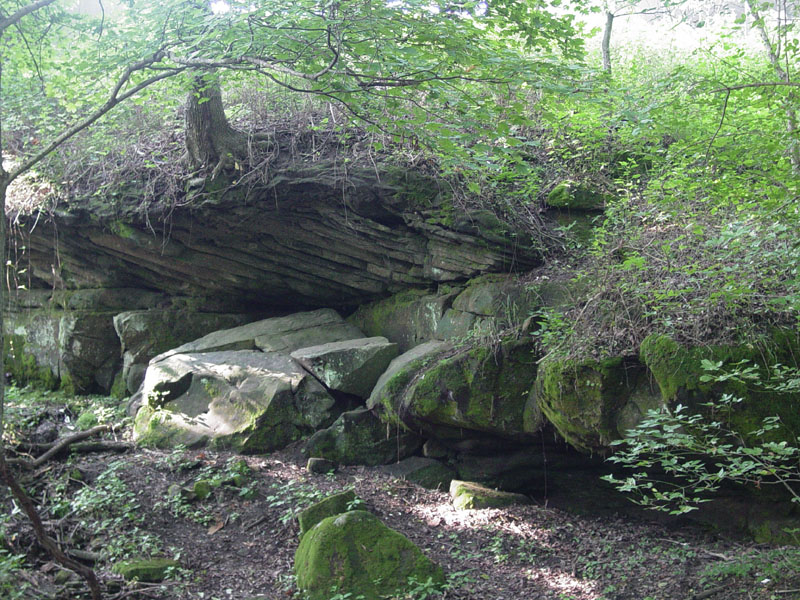
 |
| The caprock of the Pennyroyal Plateau in the Mammoth Cave region is sandstone, shale, and conglomeratic beds of the Big Clifty Sandstone and other Chester series sedimentary rocks of latest Mississippian age. Starting about 330 million years years ago, a river delta system gradually prograded across the shallow sea basin that existed in the Kentucky region. This ancient river system, called the Michigan River, drained west and south from the northern Appalachian region from Mississippian into Pennsylvanian time and possibly longer (Palmer, 1981). The result was the formation of massive and cross-bedded sandtone and shale beds across the top of the top of the older Mississippian-age limestones. Eventually, the landscape has risen and erosion wore down the land's surface. By late Tertiary time the Chester series sandstones and underlying limestones were exposed at the surface, with the Chester series, Big Clifty Sandstone, foming the Chester Uplands and Dripping Springs Escarpment (or Chester Escarpment) in the Mammoth Cave region. The Big Clifty Sandstone forms the protective caprock for much of the cavern system; although much of it has eroded away. The Mississippian limestones underlie the Pennyroyal Plateau east of the Chester Uplands in central Kentucky. This outcrop is near the Visitor Center along the trail to the Historic Cave Entrance to Mammoth Cave (Quinlan and others, 1986; Palmer, 1981). |